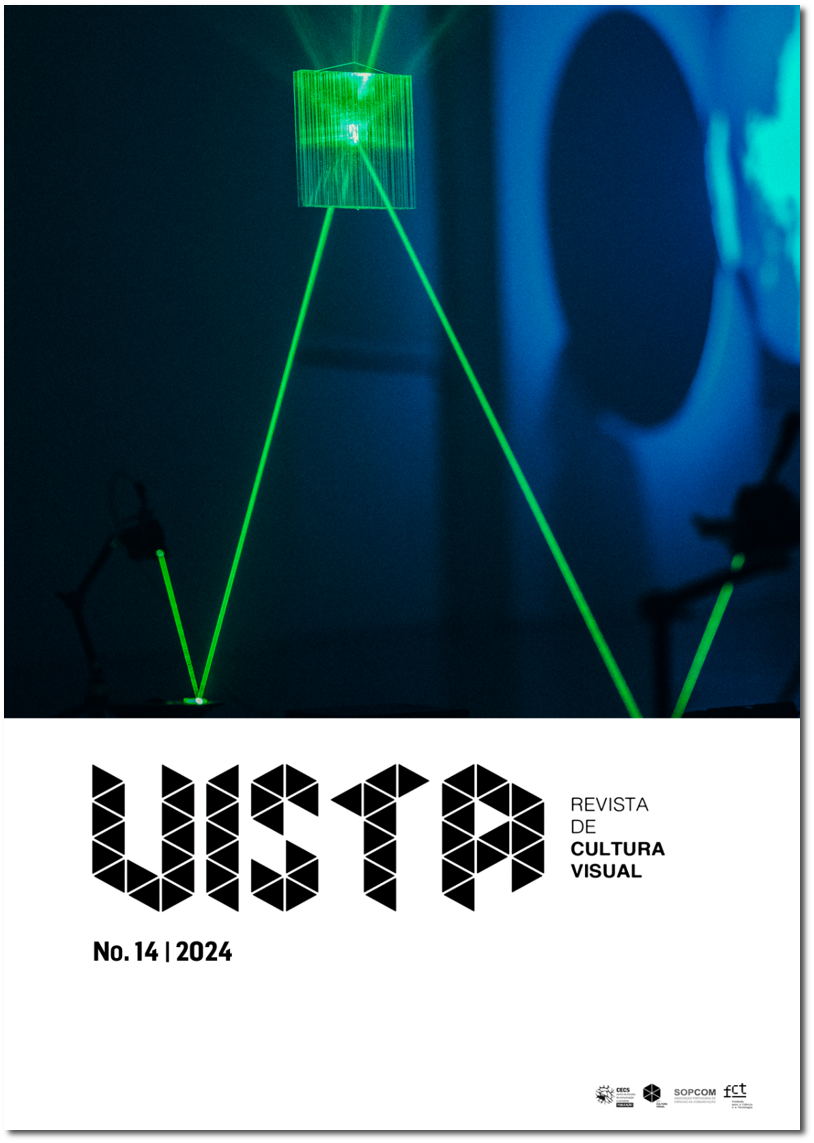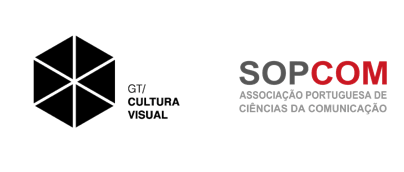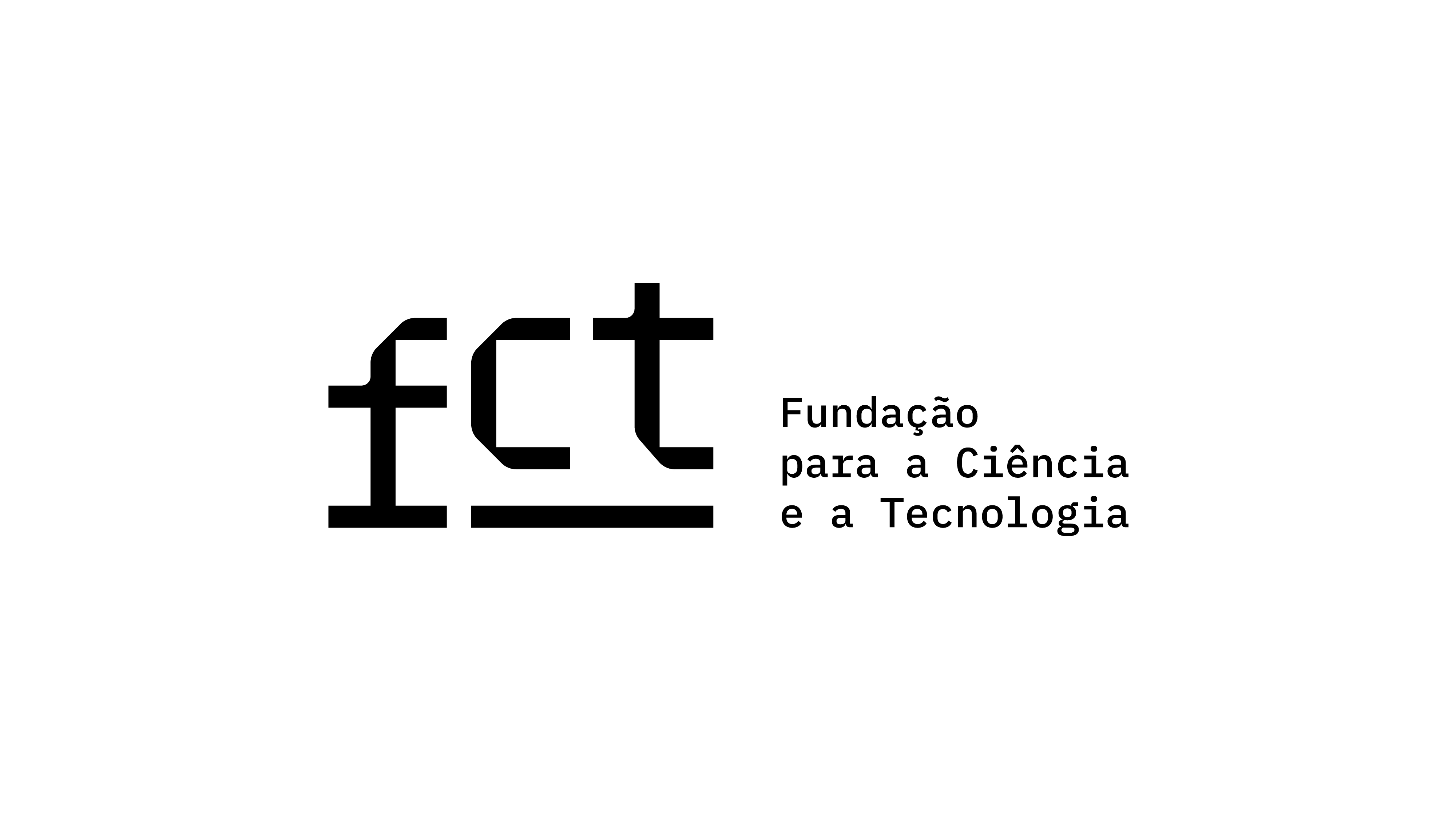From JODI to AIDOJ: The "Disruption" of Internet Art by Artificial Intelligence
DOI:
https://doi.org/10.21814/vista.5840Keywords:
artificial intelligence, creative processes, web art, net art, internet artAbstract
This article reflects on the oddities of recent artificial intelligence (AI) tools available on the internet, with the aim of creating an internet artwork titled AIDOJ (2023). It examines the biases stemming from the intrinsic elements of these tools — namely statistical principles and the interpretation of pre-existing data — as well as their large-scale nature. These factors tend to make the tools aesthetically conservative (Martín Prada, 2024), promoting "average" versions of the language (Weatherby, 2023) and reinforcing conventional and hegemonic norms. Believing that the field of art serves as a powerful space for critically reflecting on the implications of technology, we begin by encountering the term "disruptive" — a term whose modern usage denotes a contained and "marketable" form of rebellion. This inadvertently defines one of the most transgressive movements in the history of internet art: the European duo JODI — formed by Joan Heemskerk and Dirk Paesmans. We then prompted one of the most popular AI systems to generate creative outputs as chaotic and subversive as JODI's work. Through this process, the compilation of a hundred generated outputs — represented as HTML pages — forms an internet artwork. The work materialises, and as a result, AIDOJ raises critical questions about artistic creation with AI systems, exposing the aesthetic timidity of these technologies.
Downloads
References
Artificial intelligence software. (2018). Edmond de Belamy [Print]. Wikimedia Commons. https://commons.wikimedia.org/wiki/File:Edmond_de_Belamy.png
Beiguelman, G. (2023, 5 de abril). Inteligência artificial e as novas políticas das imagens. Revista Zum. https://revistazum.com.br/colunistas/inteligencia-artificial-e-as-novas-politicas-das-imagens/
Christensen, C., & Bower, J. (1995, janeiro–fevereiro). Disruptive technologies: Catching the wave. Harvard Business Review. https://hbr.org/1995/01/disruptive-technologies-catching-the-wave
Cleland, K. (2004, 16–19 de novembro). Talk to me: Getting personal with interactive art [Apresentação de comunicação]. Interaction: Systems, Practice and Theory, University of Technology, Sydney, Austrália.
Donati, L. A. P. (1997). Análise semiótica do site Jodi. Revista da Pós Graduação, 1(2), 103–111.
FABIOFON[DOT]COM. (2020, 27 de julho). BEM WEB ART | Episódio 8: JODI [Vídeo]. YouTube. https://www.youtube.com/watch?v=bFQSVf0jmH4
Fon, F. (2023). Reflexões erráticas sobre arte para a internet. In C. Gazana (Ed.), Glitch art Br 2022 (pp. 8–21). Edição do autor.
Gerstenberger, O. G., Jr. (2023, 10 de novembro). Desconstruindo o disruptivo: Além da moda, em busca de significado e impacto real [Post]. LinkedIn. https://pt.linkedin.com/pulse/desconstruindo-o-disruptivo-al%C3%A9m-da-moda-em-busca-de-otto-guilherme-tx54f
ING Group. (2001). The next Rembrandt [Print]. Wikimedia Commons. https://commons.wikimedia.org/wiki/File:The_Next_Rembrandt_1.jpg
Machado, A. (2004). Arte e mídia: Aproximações e distinções. e-compós, 1, 1–15. https://doi.org/10.30962/ec.15
Manovich, L. (2023, 1 de junho). Towards ‘general artistic intelligence’? Art Basel. https://www.artbasel.com/news/lev-manovich
Marques, V. (2023, 10 de fevereiro). ChatGPT: 100 milhões de usuários em dois meses. Isto É Dinheiro. https://istoedinheiro.com.br/chat-gpt-100-milhoes-de-usuarios-em-dois-meses/
Martín Prada, J. (2024). La creación artística visual frente a los retos de la inteligencia artificial. Automatización creativa y cuestionamientos éticos. Revista Eikon/Imago, 13, 1–22.
Mazzetto, G. (2023, 9 de novembro). Disruptivo, uma palavra vazia em muitos sentidos [Post]. LinkedIn. https://pt.linkedin.com/pulse/disruptivo-uma-palavra-vazia-em-muitos-sentidos-gillianno-mazzetto-3u39f
Menkman, R. (2009/2010). Glitch studies manifesto. http://amodern.net/wp-content/uploads/2016/05/2010_Original_Rosa-Menkman-Glitch-Studies-Manifesto.pdf
Nunes, F. O. (2010). Reflexões sobre web arte em novos contextos. Porto Arte, 17(28), 85–98.https://doi.org/10.22456/2179-8001.18791
Nunes, F. O. (2011). Podemos pensar em sites sem conteúdo? Web Arte no Brasil. https://fabiofon.com/webartenobrasil/texto_sitessemconteudo.html
Nunes, F. O. (2016). Mentira de artista: Arte (e tecnologia) que nos engana para repensarmos o mundo. Cosmogonias Elétricas.
Nunes, F. O. (2023). Mentiras de artista com inteligência artificial: Mitômato e outras criações. Aurora: Revista de Arte, Mídia e Política, 16(48), 21–40. https://doi.org/10.23925/1982-6672.2023v16i48p21-40
Paesmans, D., & Heemskerk, J. (2011, janeiro–fevereiro). From Readymade to Readybought: An ongoing history of computer art, JODI in conversation with Niels Van Tomme. Art Papers Magazine, 35(1), 30–35.
Santaella, L. (2018). Uma filosofia disruptiva para uma arte disruptiva. Eco-Pós, 21(2), 284–304. https://doi.org/10.29146/eco-pos.v21i2.20497
Silva, T. (2021). Colonialidade difusa no aprendizado de máquina: Camadas de opacidade algorítmica na ImageNet. In S. A. Silveira, J. Souza, & J. F. Cassino (Eds.), Colonialismo de dados: Como opera a trincheira algorítmica na guerra neoliberal (pp. 87–107). Autonomia Literária.
Weatherby, L. (2023, 20 de abril). O ChatGPT é uma máquina ideológica (S. Schurig & R. Gonsalves, Trads.). Jacobin Brasil. https://jacobin.com.br/2023/04/o-chat-gpt-e-uma-maquina-ideologica
Downloads
Published
How to Cite
Issue
Section
License
Copyright (c) 2024 Fábio Oliveira Nunes

This work is licensed under a Creative Commons Attribution 4.0 International License.
Authors own the copyright, providing the journal with the right of first publication. The work is licensed under a Creative Commons Attribution 4.0 International License.













